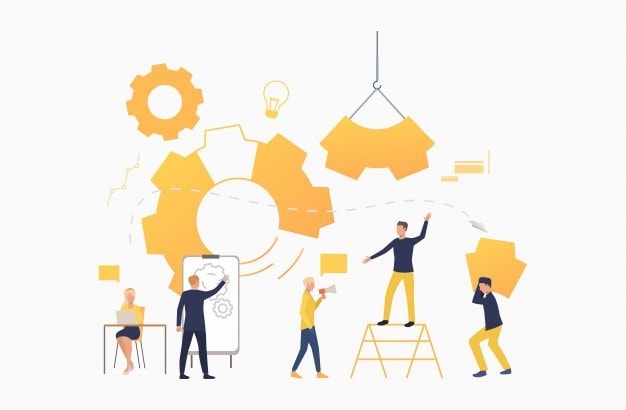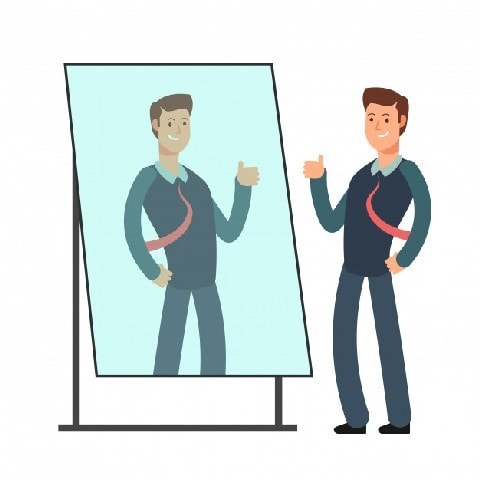Table of Contents
Definition of Organisational Design
Organisational Design, as the name suggests, is defined as a process of identifying and designing the organizational structure. It reflects the efforts of a company to integrate new and modern elements, respond to various changes, enable flexibility and ensure collaboration.
The Organisational Design also refers to the way a business organization achieves the right combination for integration and differentiation of the operations in response to the uncertainties it faces in its external surroundings.
Meaning of Organisational Design
The Organisational Design describes the creation of structures, processes, and roles so that the goals and objectives of an organization can be realized. It is also associated with the mechanical arrangement of reporting lines and positions on the organizational chart.
The Organisational Design is, in fact, a methodology that helps to identify dysfunctional aspects, realign to fit current goals and develop a plan to implement new changes.
The methodology of Organisational Design
Organizational design is a comprehensive approach to bring about improvement in the organization so that it can achieve increased efficiency, productivity, and profitability. The methodology of an organizational design includes the following steps-
- Charter the design process – Establish a charter for the design process and include desired outcomes, resource allocation, participation, deadlines and communication strategies for designing initiative. it is important to be clear in the thought-process and strategies so that it becomes easy to work as a team
- Assess the current state – Assess the state of your business to understand its strengths, functions, principles, weaknesses, and whether they are aligning with your core objectives, ideology, and strategy. It will bring clarity about the overall business and assist in making improvements
- Design the new organization – This step includes
- Define organizing principles like processes, technologies, functions, and geographies
- Streamline the core processes in business that will lead to deliverables to consumers
- Documenting procedures
- Standardizing procedures
- Organising human resources around core processes
- Defining skills, functions, and tasks
- Defining the performance metrics for each team and making them accountable for their actions
- Determining the equipment needs and requirements and layout of various departments and teams in the organization
- Identifying the support resources and staffing and where they will be located appropriately
- Defining the structure that provides operational support
- Improving development systems like goal-setting, sharing of information, compensation, training and hiring, etc
- Implement the design – Organize workgroups and train them in the new design to build skills and know-how. Rearrange facilities and equipment and change and adjust information-sharing, performance systems, and reward systems so that the company becomes more responsive to the customer needs
Elements of Organisational Design
If the organization design is planned and implemented properly, it brings forth the alignment of goals and objectives and a poor design often results in ineffective decision-making, lack of trust and rigid work environment.
It is vital to pay emphasis to the key elements of organizational design to gain the upper hand in the industry. Some of the key elements of organizational design are described below
1. Line/chain of command
The authority is delegated from top to bottom in an organization where the top management gives instructions to the bottom levels and so on and the accountability flows from downward to upward at each level.
The chain of command is clarified, and everyone knows to whom he should report.
Advantages of the line/chain of command are
- Clear instructions
- Conflict resolution
- Direct supervision
- Clear communication
- Close monitoring of employee performance
- Increase in productivity and efficiency
- Boost in profitability
The disadvantages of the line/chain of command are
- Increase in office politics because of power centralization
- Fewer initiatives
- Too much dependency on higher authorities
- Less sense of belonging
- Delay in taking decisions
- Rigid control hence lack flexibility
2. Formalisation
This element of organizational design deals with mentioning and assigning responsibilities, roles, duties and procedures to the individuals, units, departments, and teams.
The advantages of the formalization are
- Smooth flow of authority
- Boost efficiency
- Less ambiguity
The disadvantages of the formalization are
- Formal and rigid relations
- Reduction in employee morale
- Lengthy process in decision-making
3. Departmentalization
It is the element of organizational design that deals in dividing the functions as per the responsibility of the job. The common forms of departmentalization are
- Functional departmentalization
- Geographical departmentalization
- Product departmentalization
- Process departmentalization
- Customer departmentalization
Advantages of the departmentalization are
- Better coordination
- Better control
- Flexibility
- Motivated workforce
- Boost efficiency
The disadvantages of the
- Slow decision-making
- Misuse of authority
- Overspecialization
4. The span of control
This element of organizational design determines the number of managers and levels a company has and how many subordinates will report to a supervisor.
It is to a greater degree dependent upon the complexity of tasks it performs, the geographical locations and the ability of a superior and his team to handle given tasks.
The advantages of the span of control are
- Clear communication
- Few managers
- Employee empowerment
- Delegation of authority to subordinates by their supervisor
The disadvantages of the span of control are
- Barriers in decision making
- Too much work for managers
- In need of trained managers to handle responsibilities effectively
5. Centralization
This element of organizational design refers to a system where decision-making and planning are given to a single individual or the top management of the organization.
The advantages of the centralization are
- Right decision-making for any unplanned decisions
- Managing specialization
- Managing and handling crisis
- Less duplication of tasks
The disadvantages of the centralization are
- A dynamic and complex environment
- Delay in decision making
- Little sense of belonging
6. Decentralization –
This element of organizational design refers to a system where the decision-making and planning are handed to either middle or low levels of the organization. The advantages of the decentralization are
- Quick decisions
- Competitive culture
- Increase in initiatives by employees
- Improve in employee performance
- Independent decision-making by managers
The disadvantages of the decentralization are
- Duplication of work
- High cost
- Ambiguity in processes
7. Work specialization
This element of organizational design gives details about how the tasks will be divided into separate jobs. Individuals are entrusted in doing a portion of a task rather than the entire activity.
The advantages of the work specialization are
- Boost in product quality
- Boost in job satisfaction
- Boost in productivity
The disadvantages of the specialization are
- Increase in employee turnover
- Increase in costs
Types of Organisational Design
The organizational design structure is divided into two categories
Traditional designs
1. Simple structure
In a simple structure, traditional design, the emphasis is on centralized authority and low departmentalization. It is generally adopted by start-up and small business entities because the owner tends to be in control of all the major roles and functions. The advantages of the simple structure are
- Wide spans of control
- Greater employee involvement
The drawback of simple structure is
- No standardized procedures or policies
2. Functional structure
In a functional structure traditional design, the similar occupational specialists are grouped in departments that have their workforce to perform roles and duties. The advantages of the functional structure are
- Effectual task distribution because of specialization
- Boost in efficiency levels
- Increase on productivity
- Minimum costs
- Better management functioning
The drawbacks of the functional structure are
- Expensive if the specialist staff is recruited
- Increase in conflicts at managerial levels
- Poor coordination
3. Divisional structure
In a divisional structure traditional design, there are semi-autonomous or separate units with their own goals in an organization. It is seen in large organizations where functions are grouped based on projects, products or geographical areas. Each department has its resources and functions, and the manager is accountable for every related decision.
The advantages of divisional structure traditional design are
- Increased accountability
- Quick decision-making
The drawbacks of divisional structure traditional design are
- Duplication of tasks
- Increase in costs
- Conflicts in departments
- Mismatch in the goals and objectives of an organization and the department
Contemporary designs
1. Team structure
As the name suggests, the team structure organizational design is made of various teams where each one of them moves forward towards a common goal and objective. There is no chain of command, and all the teams are held accountable for their work and performance.
2. Matrix structure
In the matrix structure, organizational design specialists are recruited from different functional departments within the organization to work on one or several projects simultaneously.
There are various projects at the same time in a firm, and it is the responsibility of the project manager to allocate the required resources to complete the project. He gathers specialists to complete the project timely and successfully.
3. Project structure
In the project t structure organizational design, the members of the teamwork on projects continuously in a team-like structure. Every team has the required members, with specialized skills and know-how, to complete the project, and once it is finished, they move on to the next project.
4. Learning organization
In the learning organization, there is a capacity to change, adapt and learn. There are knowledgeable employees in the company who can share their knowledge with others and apply it effectively in the workplace.
A learning organization encourages an influential culture where every employee aligns with the company goal and is willing to work together through shared information and knowledge.
5. Autonomous internal units
The autonomous structure of the organizational design is generally found in large organization s which are comprised of several business units. The departments are decentralized and work independently without the interference of others.
There is no resource allocation or centralized authority, and each unit has its individual profit goals, competitors, clients, and products.
6. Boundaryless organization
In the boundaryless organization, the design is not limited by external, vertical or horizontal designs. The organization uses a team approach instead of departmental units and thus do not have to deal with hierarchy, departmentalization, and chain of commands.
It is an unstructured design with more flexibility.
Fundamental principles of Organisational Design
The fundamental principles of organizational design are as follows-
1. Self-reflection
The first principle of organizational design is based on self-reflection. What are its purpose and objectives, are you interested in making a difference, do you want to set a unique brand image of your company and how are you going to deliver value to your investors, clients, customers, and employees effectively are some questions that will help in self-reflection.
Go beyond your comfort zone, take a bold initiative and prioritize everything to create a perfect organizational design
2. Create a design with the right framework
An essential principle of organizational design is creating an ideal design with the right framework. Firstly identify the required elements and then prioritize them as per their relevance to the firm and now use all the building blocks to make the design
3. Utilize your top talent
Talent is often overlooked in a busy workplace environment. Still, one of the essential principles of organizational design states that one should never forget talent within the company.
Design positions so that the talent, managerial understanding and technical skills of various people can be utilized fully
3. Encourage accountability
It is essential to create an organizational design that encourages accountability. This will ensure that supervisors no longer have to micromanage, and thus lots of time is eventually saved.
When information flows smoothly, it becomes more accessible in improving and executing the strategy of the business.
Advantages of Organisational Design
The advantages of organizational design are as follows-
- Increased efficiency
- Clear mission and strategy
- Improved cycle time
- Inspires innovation
- Perfect alignment of the business strategy with the market environment
- Improves communication
- The clarity in reporting relationships
- Excellent and healthy customer relations
- Efficient work processes
- Smooth flow of information
- Employees know to whom they are going to communicate because of a transparent chain of command
- Improved quality of services and goods
- Quick decision-making
- Increase in operational efficiency
- Better growth opportunities for the firm
- Motivated workforce
- Healthy and happy work environment
- Increase in profits
- Decreased operational expenses
- Improved employee engagement
- Safe working environment
- Easy to meet future challenges
- Advancement opportunities for employees
- Improved process management
Disadvantages of ineffective Organisational Design
The disadvantages of ineffective organizational design are as follows
- Low employee morale
- Redundancies or job loss
- Lack of coordination and confusion within roles
- Failure to share information and ideas
- High employee turnover
- Lack of appropriate knowledge
- Damage of brand image
- Lack of ownership
- Failure of legal compliance
- Blame game
- Ill-defined systems
- Inconsistency in quality of work
- Waste of time
- Mistrust between management and workers
- Ineffective problem-solving
- Below target results
- Inefficient workflow with lots of breakdowns
Liked this post? Check out the complete series on Management





